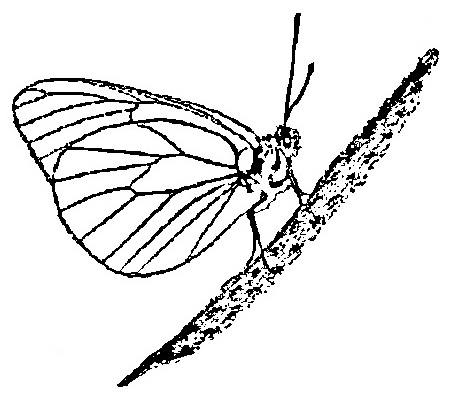|
110. Argynnis aglaja (Linnaeus, 1758) / Dark green fritillary / Nymphalidae –Heliconiinae
NL: grote parelmoervlinder / D: Groβer Perlmutterfalter / F: grand nacre
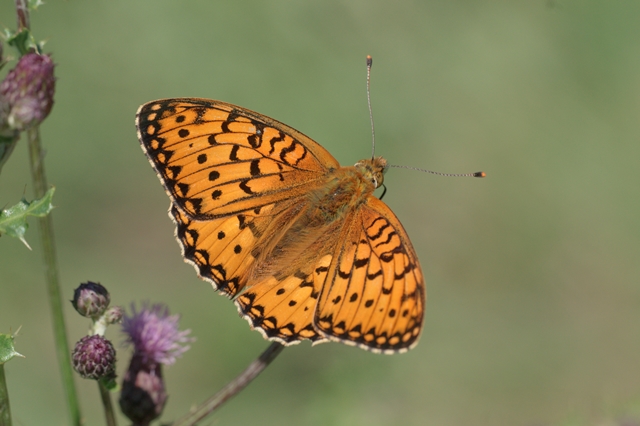 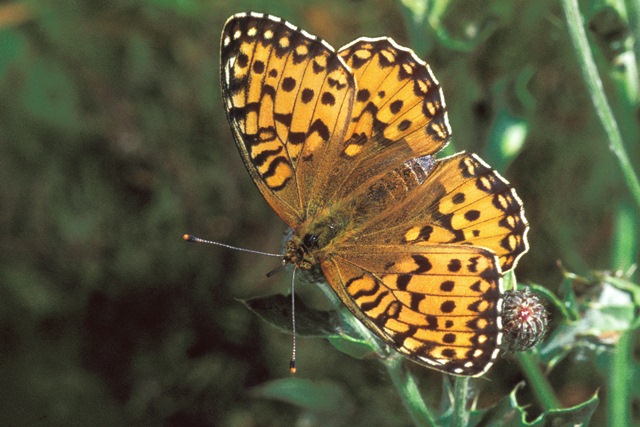 
Photographs: Jeroen Voogd, Frits Bink, Jeroen Voogd ©.
Medium-sized or large, wing length 25 (23-29) mm. In the Benelux, this species is known from raised bogs in the Ardennes, chalk grassland in Wallonia, from the dunes of the island Texel, Netherlands and from heathland on the Veluwe. Previously it was present also from ‘blauwgrasland’ in the provinces Zuid-Holland and Friesland.
Butterfly is on the wing from mid-June until mid-August. The species is known from a great variety of climates: mild maritime and severe continental. Amplitude 4 to 20, required heat sum 300°d and maximum tolerated 2300°d, corresponding climate windows 18 to 41 weeks.
This species is a somewhat different fritillary in Europe, in America there are 14 relatives called Speyeria (Scott 1986: 324-335). The European Argynnis aglaja occurs in both cool and wet climates, from Ireland and the United Kingdom and also in the warm and dry climate in the garrigue of southern France.
In the Netherlands, there was a well-known locality, the heathland Hoge Veluwe, where two species occurred in fluctuating numbers but not synchronously: Argynnis aglaja and A. niobe. However, the latter species disappeared around 2005, whereas the former persists in that locality.
Ecological characteristics
Behaviour over time
Overwintering: newly born larva in litter layer, near to a violet.
Reproduction: oviposition starts after 6-8 days when the body contains about 95 eggs, estimated potential production twice as much.
Larval feeding periods: 50 (42-67) days in period mid-April until end-June.
Generations: one.
Spreading of risk: spread in ending of the diapause.
Life cycle: egg: 17 (14-25) days; larvae 41-47 weeks; pupa 17 (14-25) days.
Life span of adult: long, 4 weeks.
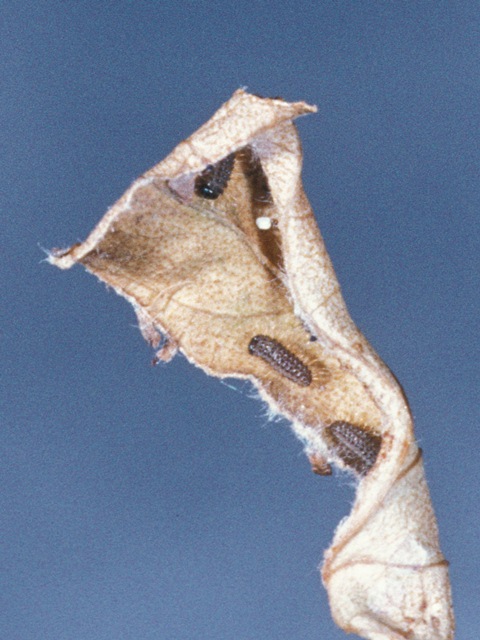 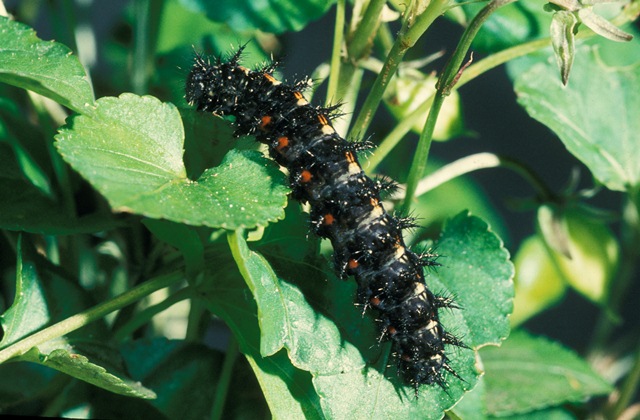
Photographs: Frits Bink ©.
Behaviour in space
From stay-at-home to migrant: stay-at-home, spatial requirement modest.
Finding a mate: male patrols.
Orientation in the landscape: medium tall vegetation, in particular the edge between short and tall grass.
Oviposition: on the base of or near a violet, on any stem or straw.
Defence
Threats from other organisms: larvae is armoured with spines, larva pupates hidden in a tent.
Threats from the environment: considering the variety in climate where the species can be found, it should be quite resistant to adverse conditions.
Feeding habits
Adult: nectar, all kind of flowers.
Larva: wanders around and eats frequently a little of every newly found host-plant.
Larval foodplants
Plant species: Violaceae, Viola canina, V. curtisii, V. hirta, V. lutea, V. palustris, V. persicifolia, V. rupestris, V. tricolor.
Journal
Rearing experiments:
1. Based on specimen from Bihain, Baraque de Fraiture, Belgium:
2 August 1980: one female captured that laid 35 eggs, mostly at the base of a violet.
17 August: larvae visible inside the egg shells.
18 August: all eggs hatched.
21 August: larvae had eaten their egg shell completely and rested on the leaves of the violets.
Overwintered outdoors.
5 April 1981: no larvae found on host-plant or container.
2. Based on specimen from national park Hoge Veluwe, Netherland:
29 July 1982: worn female captured.
5 August: all eggs hatched.
Overwintered in fridge.
13 March 1983: taken out of the fridge.
19 March: three larva active.
10 April: some larvae still in diapause, others end first instar.
18 April: biggest larvae in third instar.
24 April: biggest larva in fourth instar, the smaller ones in second. Larvae wandered always to the sunny side of the pot.
3 May: one lava last instar, smallest one third.
15 May: one prepupa inside a big tent in the grass.
23 May: two pupae together in one big tent.
5 June: all but two larvae pupated.
8 June: first adult appeared.
12 June: four males hatched.
22 June: first female appeared.
Table 110-1. Results of dissections

Table 110-2. Collection and observation localities
B, Baraque de Fraiture, 550 m, 50° 14’ 32”N – 5° 46’ 58”E; 15 June 1980, 2 August 1980, 19 June 1983.
EST, Endla Nature Reserve, 58° 52 34”N – 26° 16’21”E; 10 July 1999.
GB, Aviemore, 57° 12’ 14”N – 3° 50’ 20”W; 9 July 1981.
F, Dommartin-la-Montagne, 49° 01’ 51”N – 5° 36’ 53”E; 24 June 2006.
F, Maison-du-Bois, 46° 57’ 57”N – 6° 25’ 17”E; 24 August 1984.
F, Vallouise, 1200 m, 44° 51’ 18”N – 6° 29’ 28”E; 3 September 1982.
F, Vosges, Grand Ballon, 1424 m, 47° 54’ 04”N – 7° 05’ 54”E; 26 July 1983.
F, Vosges, Katzenkoepfle, 565m, 48° 01’ 54”N – 7° 06’ 04”E; 10 July 1984.
F, Vosges, Tourbière de Machais, 980 m, 48° 00’ 21”N – 6° 57’49”E; 24 July 1983.
F, Vosges, Wasserbourg, 500 m, 48° 00’ 13”N – 7° 09’ 46”E; 21 August 1984.
NL, Hoge Veluwe, 52° 05’N – 5° 51’E; 29 July 1982, 11 July 1983, 30 July 1984.
NL, Hoge Veluwe, 52° 04’ 47”N – 5° 49’ 47”E; 27 July 2000, 31 August 2000.
NL, Hoge Veluwe, 52° 03’ 41”N – 5° 50’ 46”E; 31 May 2002.
S, Gotland Buttle, 57° 25’ 09”N – 18° 34’ 38”E; 25 June 2004, 16 July 2004.
S, Gotland Hummelbosholm, 57° 11’ 48”N – 18° 32’ 56”E; 8 July 2004.
S, Gotland, Kappelshamn, 57° 55’ 04”N – 18° 45’ 20”E; 30 June 2004.
S. Gotland, Klinteklinten, 57 40’ 14”N – 18 46’ 26”E; 13 July 2004.
S, Gotland, Lickershamn, 57° 50’ 17”N – 18° 34’ 54”E; 3 July 2004, 17 July 2004.
S, Gotland, Ljugarn, 57° 22’ 03”N – 18° 41’ 31”E; 24 June 2004.
S, Gotland, Mallgård Källmyr, 57° 19’ 32”N – 18° 17’ 14”E; 20 July 2004.
S, Gotland, Maskmyr, 56° 56’ 20”N – 18° 12’ 20”E; 25 June 2004.
S, Gotland, Östergarn, 57° 24’ 43”N – 18° 43’ 27“E; 15 July 2004.
S, Gotland, Russväter, 57° 23’ 29”N – 18° 43’ 36”E; 16 July 2004.
S, Gotland, Stygmyr, 57° 50’ 10”N – 18° 38’ 32”E; 26 June 1991, 18 July 2004.
S, Gotland, Åsbergerka hagen, 57° 39’ 13”N – 18° 18’ 30”E; 29 June 2004.
S, Öland, Borg, 56° 40’ 04”N – 16° 36’ 05”E; 10 July 1982.
S, Öland, Stenåsa, 56° 32’ 44”N – 16° 36’ 43”E; 7 July 1982, 15 August 1983, 21 July 2004.
S, Öland, Eketorp, borg 56° 17’ 43”N – 16° 29’ 10”E; 23 July 2004.
S, Östhammar, 60° 23’ 01”N – 18° 26’ 51”E; 19 August 1985.
Fig. 110-1. Argynnis aglaja, phenogram adapted from Bos et al. 2006: 296.
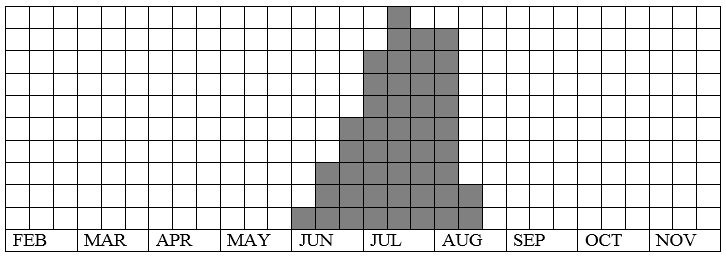
Fig. 110-2. Argynnis aglaja, habitat characteristics.

Fig. 110-3. Argynnis aglaja, climate matrix, heat-sums 300 - 2300°d.

|

